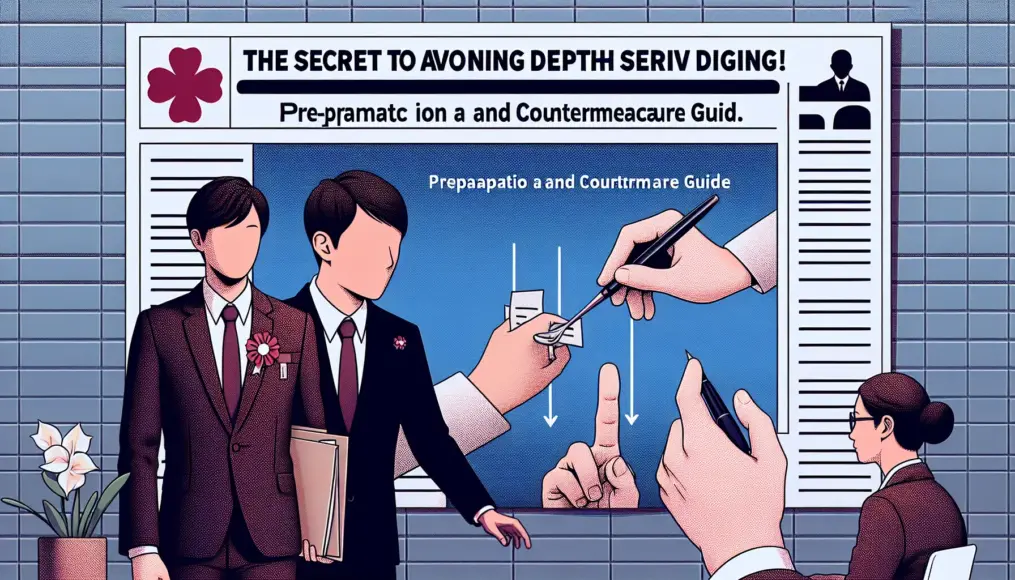When it comes to searching for a new job after leaving your previous position, how you present your work history on your resume is critical. Specifically, the way you explain your reason for leaving can significantly impact the impression you make on hiring managers.
By effectively showcasing your work experience, you can positively communicate your skills and background. In this article, we’ll share some key strategies for writing about your work history on your resume after leaving a job.
- How to Positively Explain Your Reason for Leaving
- Techniques to Make Your Work History Stand Out
- How to Tackle Employment Gaps Effectively
Key Points for Writing Your Work History After Leaving a Job
How you articulate your work history after resigning is a crucial aspect of your job search. Particularly, explaining your reasons for leaving can significantly impact the impression you make on hiring managers. Additionally, effectively highlighting your work experience allows you to showcase your skills and background in the best light.
How to Explain Your Reasons for Leaving
The reason for leaving a job is a critical element of your resume. To avoid leaving a negative impression, try to frame your reasons positively. For instance, mentioning that you left to pursue career advancement or to seek new challenges can be very effective.
Here are some examples of how you might express your reasons for leaving:
- I left in search of new growth opportunities.
- I was looking for an environment where my skills could be utilized more effectively.
- The corporate culture wasn’t a good fit, so I sought a workplace that aligned better with my values.
How to Emphasize Your Work History on Your Resume
When it comes to your resume, detailing your work history is incredibly important. Clearly stating specific achievements and projects you’ve been involved in can effectively communicate your skills and experience. It’s also essential to highlight the aspects of your work history that you are particularly proud of.
Consider focusing on the following points when writing your resume:
- Include specific numbers or results to demonstrate your impact.
- Provide detailed descriptions of the projects you worked on and your role in them.
- Clearly list any skills or qualifications you’ve acquired.
Moreover, don’t forget to consider including your motivation for applying in your resume. If you’re interested, check out Should You Skip Writing a Motivation Statement in Your Resume? A New Job Search Approach. This approach can help you learn effective ways to communicate during interviews.
Techniques to Present Your Work History Positively
When it comes to job hunting, how you present your work history is crucial. Especially on your resume after leaving a job, emphasizing your past experiences positively can really showcase your appeal to potential employers. By clearly demonstrating specific achievements and skills, you can leave a strong impression on hiring managers.
How to Detail Your Achievements
It’s essential to detail your accomplishments in your work history. Using numbers and results can effectively convey your contributions. For instance, phrases like “increased sales by 20%” or “completed the project on time” are particularly impactful.
By showcasing specific achievements, your resume becomes more convincing and compelling.
- Use numbers to illustrate your results.
- Describe the projects you were involved in with detail.
- Clearly state the goals you achieved.
Highlighting Your Skills
To present your work history positively, highlighting your skills is equally important. It’s vital to communicate clearly what skills you possess. On your resume, list relevant skills and include specific examples of how you’ve used them.
For example, promoting your experience as a “team leader” or your “expertise in specific software” can enhance your strengths. Additionally, when introducing yourself in an interview, it’s beneficial to deepen your understanding of how to effectively convey your skills. For more information, check out How to Showcase Your Stress Resilience in an Interview: Comprehensive Answer Strategies.
- Create a list of your strongest skills.
- Include specific anecdotes where you utilized those skills.
- Explain how your skills have been beneficial.
How to Address Employment Gaps on Your Resume
It’s not uncommon for anyone to have periods of unemployment after leaving a job. How you express this gap on your resume can be crucial to your job search. By clearly explaining what you were doing during this time, you can leave a positive impression on hiring managers.
Providing Positive Explanations for Employment Gaps
When discussing your employment gap, it’s essential to frame it in a way that doesn’t sound like an excuse. To avoid any negative perceptions, focus on the positive reasons behind your time away from work. For instance, mentioning that you were engaged in self-improvement or skill development can be very effective.
A concrete example might be, “I took the opportunity to pursue a certification in [specific field] to acquire new skills.”
- Explain your reason for leaving positively.
- Mention activities related to skill development or self-improvement.
- Include specific details about what you did.
How to Write About Activities During Your Employment Gap
It’s also important to highlight what you were doing during your employment gap on your resume. Activities like volunteering, obtaining certifications, or enhancing skills through hobbies can showcase your proactive attitude. This conveys to hiring managers that you weren’t just idle during that time.
For example, you could say, “I worked on improving my communication skills through my passion for [hobby].” Including specific activities will strengthen your application.
- Provide detailed descriptions of your activities.
- Highlight experiences that contributed to skill enhancement.
- Showcase your commitment to social contribution and continuous learning.
How to Create a Resume for Career Advancement
When aiming for career advancement, crafting an effective resume is crucial. Specifically, how you arrange your work history can be the key to unlocking your next opportunity. By tailoring your resume to fit the job you’re targeting, you can leave a lasting impression on hiring managers.
Tailoring Your Work History to Your Desired Position
It’s essential to customize your work history in your resume according to the position you’re aiming for. For instance, if you’re looking for a sales role, emphasize your past sales achievements and experience in client management. On the other hand, if you’re pursuing a technical position, make sure to highlight your specialized skills and project experiences.
By strategically arranging your work history, you can effectively showcase that you are a suitable candidate for the role.
- Highlight experiences related to the target job.
- Include specific achievements in your work history.
- Clearly demonstrate your skills and qualifications.
Strategies for Creating a Resume That Resonates with Hiring Managers
To create a resume that resonates with hiring managers, there are several strategies you can implement. First, pay attention to the layout and design of your resume. A clean, organized format will leave a positive impression on readers.
Additionally, your self-promotion statement and motivation for applying are vital components. Clearly articulate your experiences and skills, and communicate how you can contribute to the organization.
- Refine the design of your resume.
- Write a specific self-promotion statement.
- Clearly convey your motivation for applying.
Summary
How you present your work history on your resume after leaving a job is a crucial aspect of your job search. By thoughtfully addressing your reasons for leaving, managing gaps in your employment, and effectively showcasing your experience, you can make a positive impression on hiring managers. Let’s harness these strategies to craft a resume that paves the way for your career advancement.
- It’s essential to explain your reasons for leaving in a positive light.
- Clearly outline any activities during employment gaps.
- Tailor your work history to align with the roles you’re targeting.
Wishing you all the best in your job search! If you have any questions or thoughts, please feel free to share them in the comments!



Comment